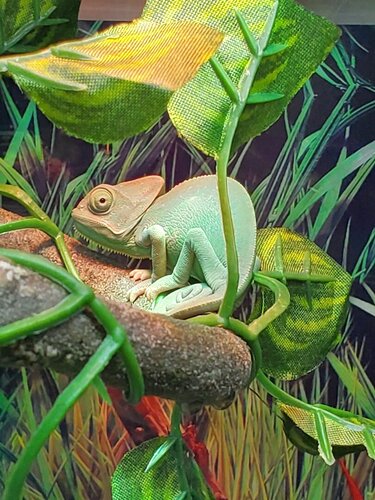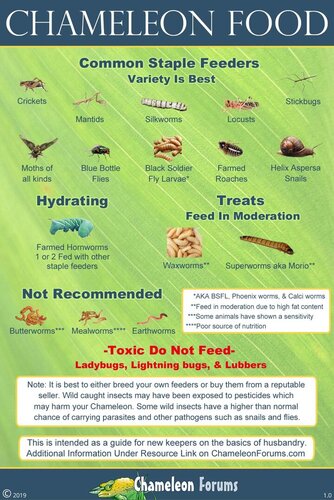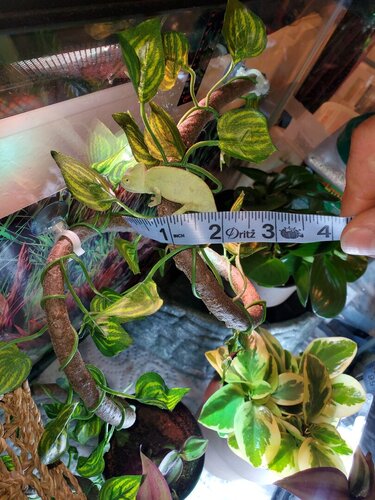BlusMom
Member
Chameleon Info:
- Your Chameleon - Veiled, unknown sex, petco said they didn't know also don't know how old but he's fairly small. I just got him today.
- Handling - I only plan on handling him if he comes to me willingly while I'm doing something in his cage.
- Feeding - Small crickets, small meal worms dusted with calcium. There were quite a few crickets in the terrarium at petco so he's eaten today already. I put 2 crickets in the cage just to see and he ate 1. Also put mealworms and small pieces of collard greens in his bowl.
- Supplements - zoo med repti calcium with d3
- Watering - currently using a big dripper, I bought a reptirain but it doesn't work
- Fecal Description - He literally just pooped, urate was almost white,poop was solid with a long string (he had coconut substrate at petco I'm thinking he ate some on accident.
- History - About 30 minutes after he was in his enclosure he had white stuff around his nose, looked that up it said it was salt. I'm saying he but I don't know. He's staying kind of blue.





